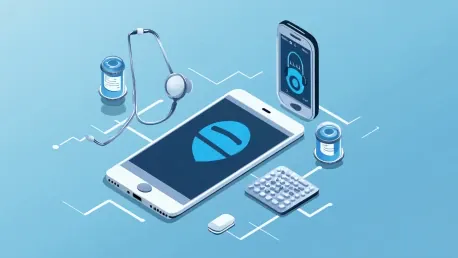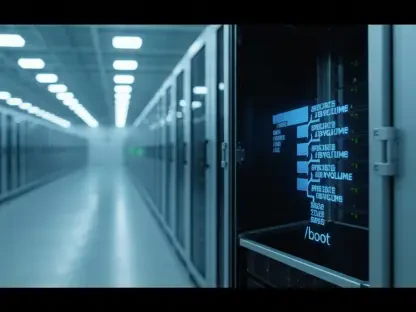As the healthcare sector continues to undergo rapid digital transformation, revolutionizing patient care, administrative processes, and data management, it simultaneously faces significant cybersecurity challenges. Cybercriminals are increasingly targeting medical records because of their high value for fraud, identity theft, and ransom demands. Traditional authentication methods such as passwords and security questions are proving inadequate to protect against these sophisticated cyber threats. Within this context, voice biometrics presents itself as a critical and advanced solution to bolster healthcare security.
The Shortcomings of Traditional Authentication Methods
Healthcare institutions have long relied on passwords and security questions for securing sensitive information, but these methods are plagued with numerous weaknesses. Passwords, despite being a standard security measure, can be easily forgotten, stolen, or shared among healthcare staff, creating substantial security vulnerabilities. When medical professionals spend time remembering or retrieving passwords, it leads to interruptions in urgent care routines, hampering the efficiency of medical services.
Another significant issue is the incompatibility of traditional authentication methods with the strict infection control protocols mandated in healthcare environments. Touch-based methods such as fingerprint scanners or manual entry breach hygiene standards, posing risks of contamination in sterile environments. This urgency highlights the necessity for touchless solutions that mitigate these hygiene risks. Voice biometrics, offering hands-free authentication, become an ideal choice, aligning perfectly with the need for sterile and efficient operations in healthcare.
Advantages of Voice Biometrics
Voice biometrics provide a remarkably efficient and seamless alternative to traditional security measures, significantly enhancing security and operational efficiency. This advanced technology enables healthcare professionals to securely and conveniently access electronic health records (EHRs), administrative tools, and telehealth platforms without the hassle of traditional passwords. Considering that many medical professionals are already accustomed to using voice dictation technologies in their everyday workflows, the integration of voice authentication becomes a smooth and non-disruptive transition.
From the perspective of patients, voice biometrics offer a secure and straightforward means of identity verification during telehealth appointments, prescription refills, and insurance verifications. Unlike complex passwords or security questions, voice biometrics simplify the authentication process, reducing friction and enhancing patient engagement. By eliminating the need for complex credentials, this technology streamlines healthcare processes, making it more efficient and patient-friendly.
Confronting the Deepfake Threat
Despite the numerous advantages, the rise of AI-generated deepfake voice technology presents new and serious challenges to voice biometrics. Cybercriminals now possess the ability to create synthetic voices that closely mimic real individuals, posing a dire threat to traditional voice authentication systems. These sophisticated spoofing attacks have stark implications, including unauthorized access to sensitive medical records, medical fraud, identity theft, and significant legal and regulatory consequences for healthcare providers.
The threat of deepfake technologies underscores the essential need for advanced security measures to protect against voice spoofing attacks. Addressing this emerging threat landscape requires robust countermeasures capable of detecting and mitigating the risks posed by synthetic voice attacks. The continued evolution of cyber threats mandates innovative solutions to uphold the security and privacy of healthcare data.
Advanced Voice Biometrics for Enhanced Security
To effectively counter sophisticated threats, healthcare institutions must adopt advanced voice biometric solutions equipped with anti-spoofing and deepfake detection technologies. These cutting-edge systems leverage machine learning algorithms to analyze voice patterns and detect anomalies that indicate synthetic manipulation. By continuously learning and adapting, these technologies stay ahead of potential threats, ensuring that the voice authentication process remains secure.
Next-generation voice biometric systems are characterized by key capabilities such as real-time fraud detection and adaptive voiceprints. Real-time fraud detection enables healthcare institutions to identify and block suspicious interactions instantly, preventing unauthorized access to sensitive data. Adaptive voiceprints, on the other hand, enhance the resilience of user voice profiles against imitation attacks by continually refining the voiceprints based on natural variations in the user’s voice.
The Importance of Multi-Layered Security
While voice biometrics significantly enhance security, they are most effective when implemented as part of a multi-layered authentication strategy. Combining voice authentication with secondary verification methods such as spoken one-time passcodes (OTPs) and device identification techniques provides an additional layer of security, fortifying the authentication process. This combination helps ensure that even if one layer is compromised, multiple barriers protect against unauthorized access.
Healthcare organizations are strongly advised to adopt best practices in implementing secure voice authentication. This includes seamless integration with existing EHR systems, ongoing improvement of security measures, and regular security audits to identify and address vulnerabilities. Continuous education for both staff and patients about the risks and prevention of voice spoofing attacks is equally essential, as it fosters a culture of security awareness within the organization.
Staying Ahead Through Continuous Evolution
As the healthcare sector continues its rapid digital transformation, introducing unprecedented advancements in patient care, administrative processes, and data management, it concurrently faces daunting cybersecurity challenges. Hackers are increasingly targeting medical records due to their substantial value for fraud, identity theft, and ransom schemes. Traditional methods of authentication, such as passwords and security questions, are proving to be insufficient in defending against these advanced cyber threats. Within this evolving landscape, voice biometrics emerges as a vital and sophisticated solution to enhance security in the healthcare industry. By leveraging unique voice patterns, this technology significantly reduces the risks associated with unauthorized access and ensures a more secure environment for sensitive patient data. As cyber threats evolve, the shift towards more robust authentication methods like voice biometrics is crucial for safeguarding healthcare systems against potential breaches, ensuring the integrity of patient information, and maintaining trust within the healthcare ecosystem.









